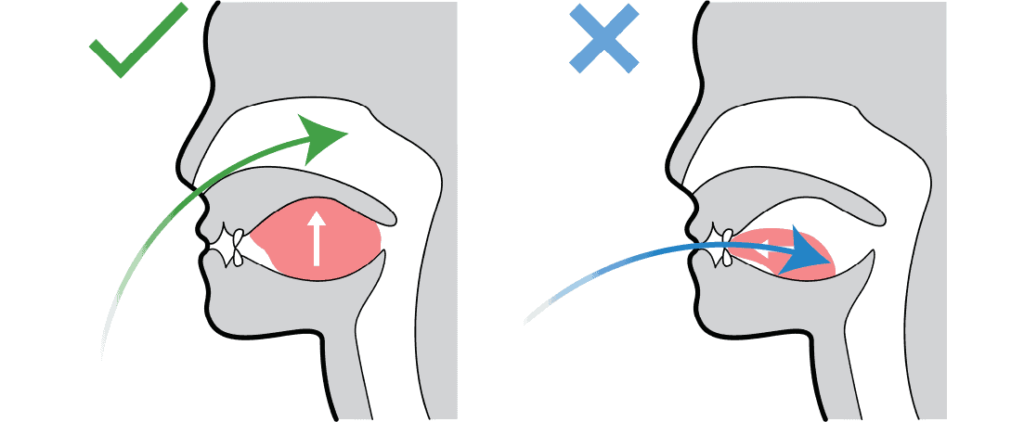Mewing, a technique popularized by orthodontist Dr. John Mew, focuses on correcting tongue posture to improve jaw alignment, facial symmetry, and breathing. While scientific research on its long-term effects is limited, proponents believe consistent practice can lead to subtle structural changes over time. This guide will walk you through exactly how to do mewing properly, using simple, actionable steps. Whether you’re new to the concept or refining your technique, this tutorial ensures clarity and precision. Deep information refer the article What Is Mewing and Can It Reshape Your Face?

Step 1: Understand Proper Tongue Posture
Mewing starts with positioning your tongue correctly. Here’s how:
- Rest Your Entire Tongue on the Roof of Your Mouth:
- The tip of your tongue should press gently against the ridge behind your upper front teeth (the “incisive papilla”).
- The middle and back thirds of your tongue should lie flat against the hard and soft palate (roof of the mouth).
- Avoid Teeth Contact:
- Your tongue should not touch your teeth. This prevents dental misalignment.
Common Mistake: Only placing the tip of the tongue on the palate. The entire tongue must engage.
Step 2: Align Your Jaw and Lips
Proper jaw positioning supports the tongue posture:
- Keep Teeth Slightly Apart:
- Your upper and lower teeth should not touch. Maintain a small gap (1–3 mm) to relax the jaw.
- Close Your Lips Softly:
- Lips should be sealed without tension. No clenching or pursing.
Pro Tip: Practice in front of a mirror to ensure your face looks relaxed.
Step 3: Breathe Through Your Nose
Nasal breathing is critical for mewing success:
- Inhale and Exhale Through the Nose:
- Mouth breathing disrupts tongue posture and strains facial muscles.
- Check for Nasal Congestion:
- If nasal breathing feels difficult, address allergies or sinus issues first.
Note: Nighttime mouth breathing is common—try nasal strips or consulting a doctor if needed.
Step 4: Maintain Consistency
Mewing only works with regular practice:
- Start with Short Sessions:
- Begin with 15–30 minutes daily, gradually increasing to all-day practice.
- Use Reminders:
- Set phone alerts or place sticky notes to check your posture hourly.
- Incorporate into Daily Activities:
- Practice while working, walking, or watching TV.
Common Mistake: Forgetting to mew after initial practice. Consistency is key.
Step 5: Strengthen Tongue Muscles (Optional)
Weak tongue muscles can make mewing challenging. Try these exercises:
- Tongue Press:
- Press your entire tongue upward against the palate for 5 seconds. Repeat 10 times.
- Swallowing Practice:
- Swallow without using your cheek muscles. Let the tongue push saliva to the roof of your mouth.
Pro Tip: Chewing tough foods (e.g., raw carrots) can naturally strengthen jaw and tongue muscles.
Step 6: Monitor Progress and Adjust
Track changes to ensure you’re on the right path:
- Take Monthly Photos:
- Capture front and side profiles in consistent lighting to observe subtle facial changes.
- Check for Discomfort:
- Pain in the jaw or teeth? Reduce tongue pressure or consult a dentist.
Note: Results vary—some see changes in months, others in years. Patience is crucial.
Common Mistakes to Avoid
- Pressing Too Hard:
- Excessive force can strain muscles or misalign teeth. Use gentle, steady pressure.
- Mouth Breathing:
- Undermines mewing efforts. Stay mindful of nasal breathing.
- Ignoring Jaw Alignment:
- A slack jaw (open mouth) or clenched teeth disrupts posture.
Tips for Long-Term Success
- Pair with Good Posture: Keep your head upright and shoulders back to support proper alignment.
- Stay Hydrated: A dry mouth makes tongue posture uncomfortable. Drink water regularly.
- Consult a Professional: If unsure about technique, seek guidance from a myofunctional therapist.
Conclusion
Mewing is a simple yet deliberate practice that relies on proper tongue posture, nasal breathing, and consistency. By following these steps—resting your full tongue on the palate, aligning your jaw, and staying patient—you can integrate mewing into your daily routine safely. Remember, subtle changes take time, but disciplined practice can yield meaningful results.